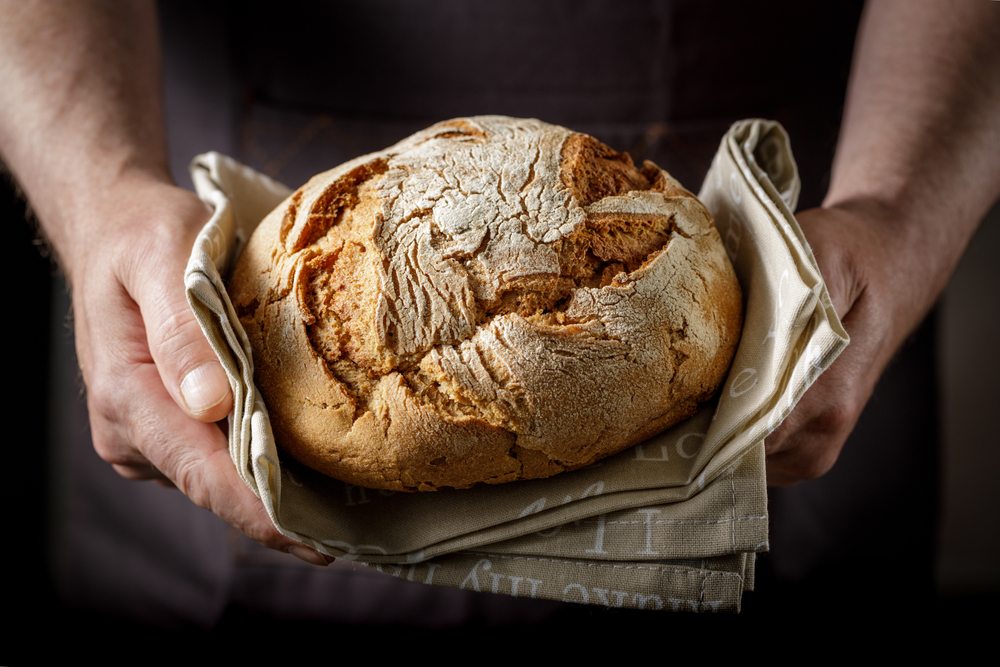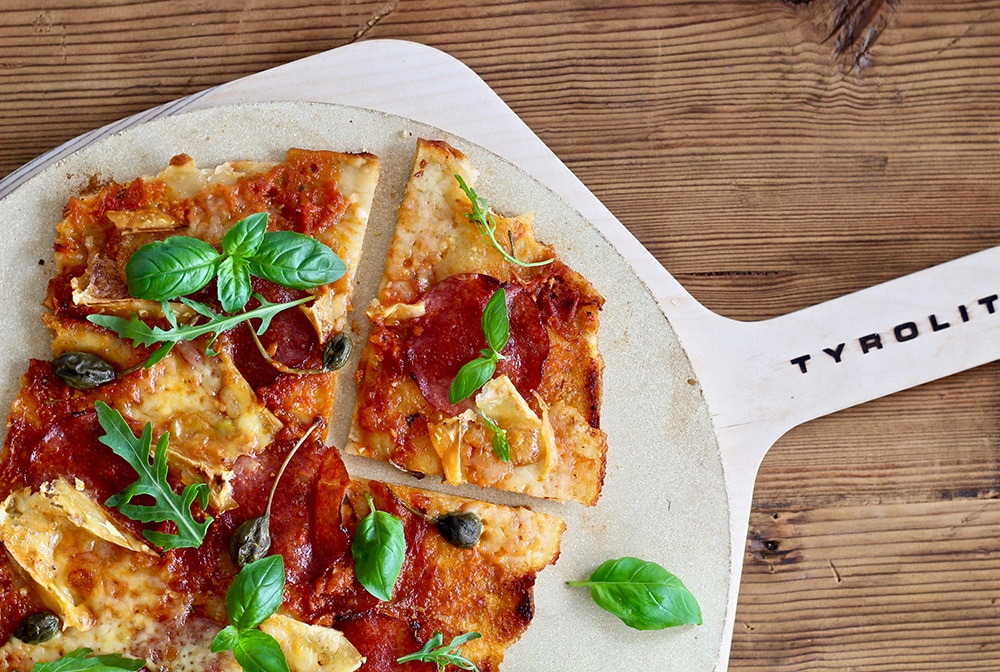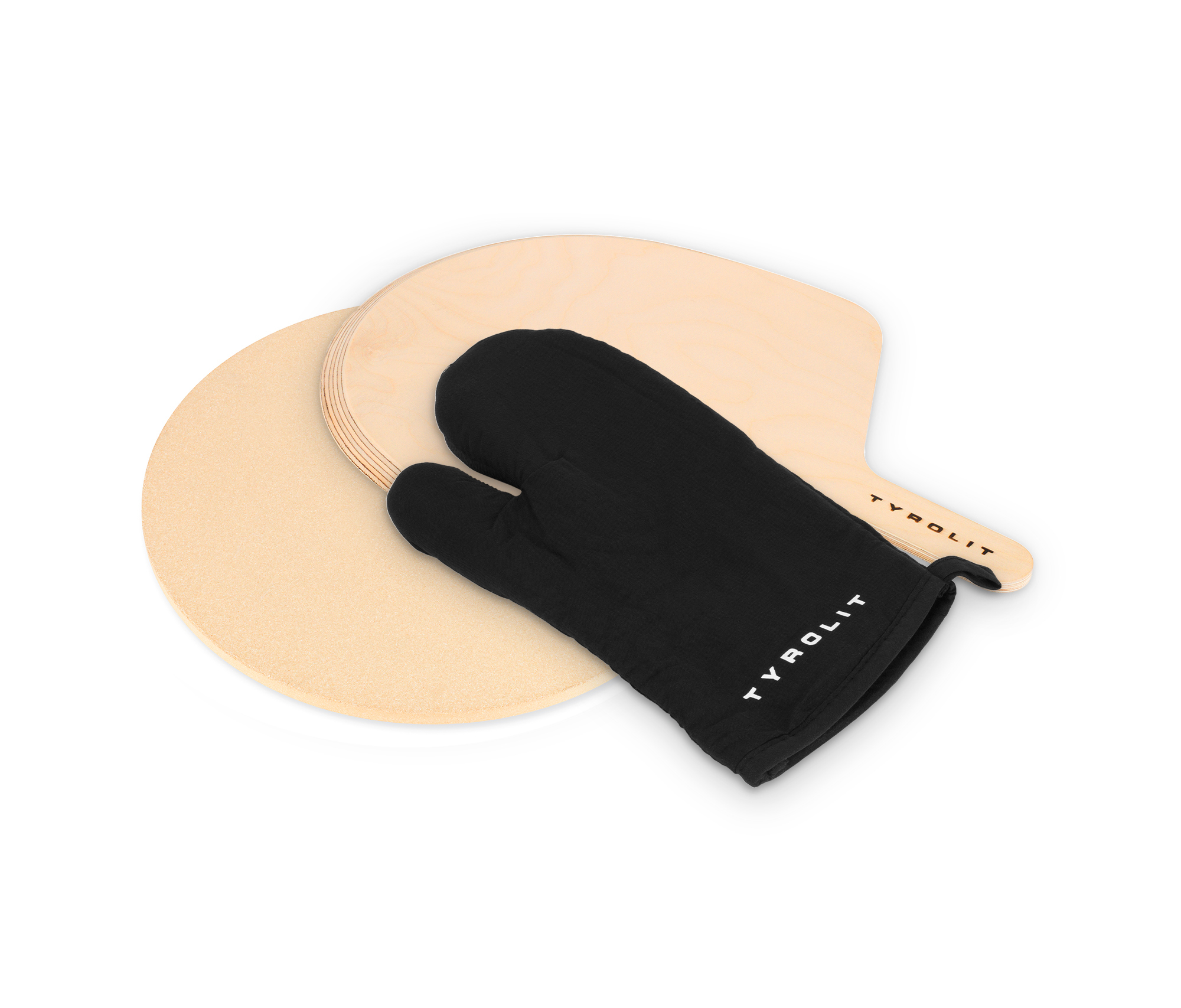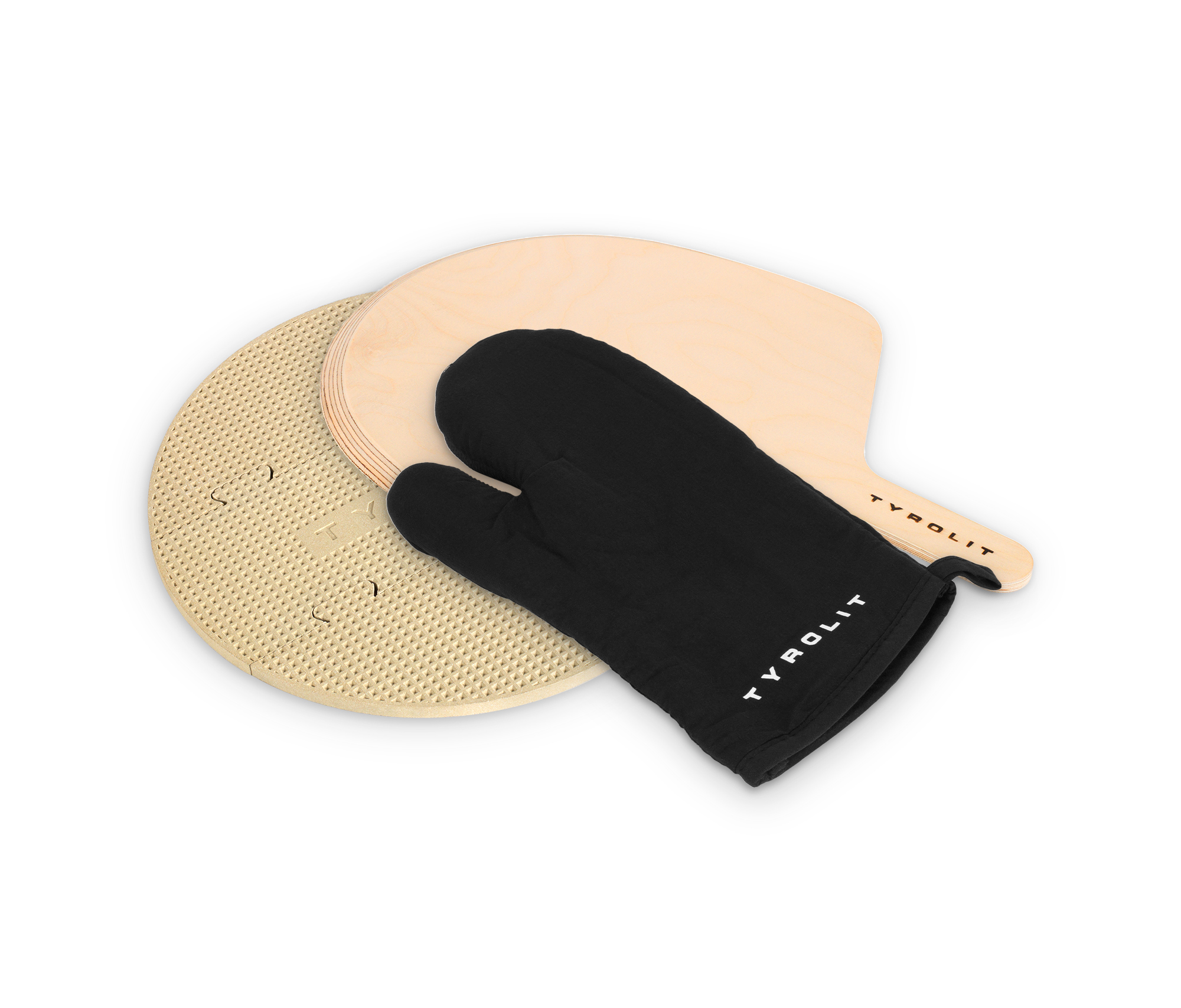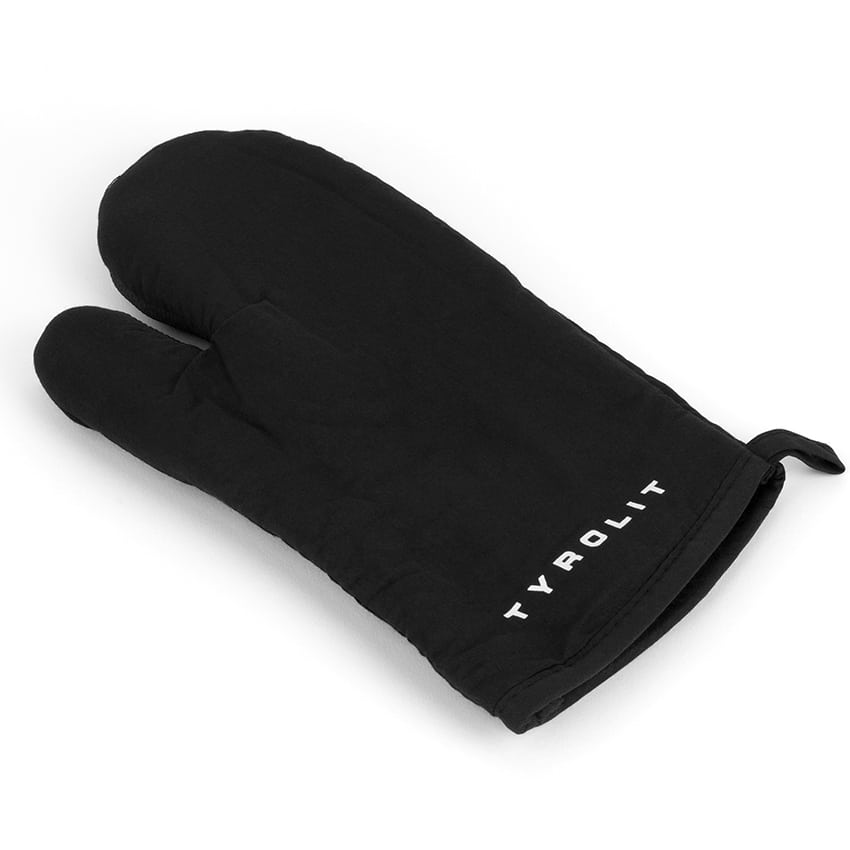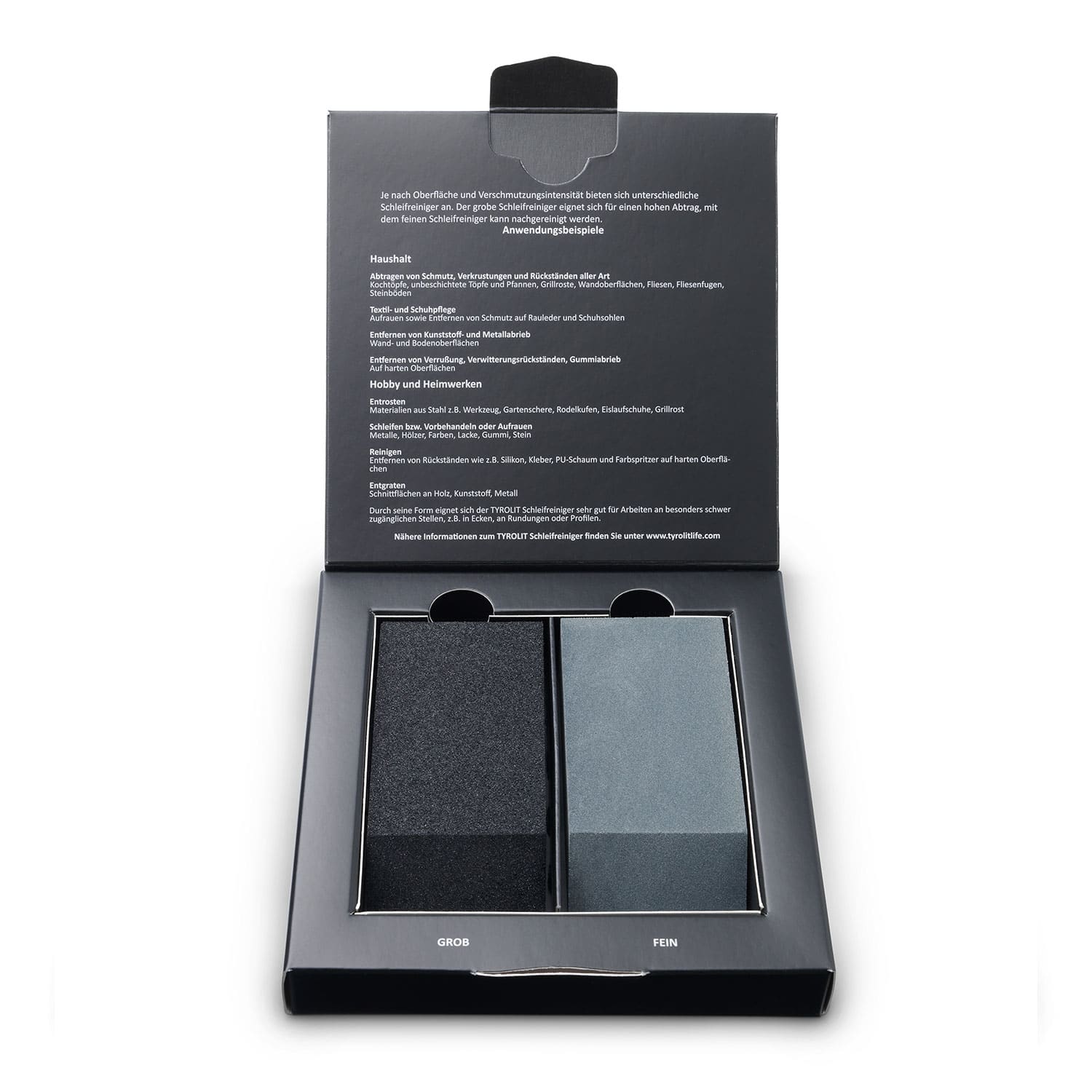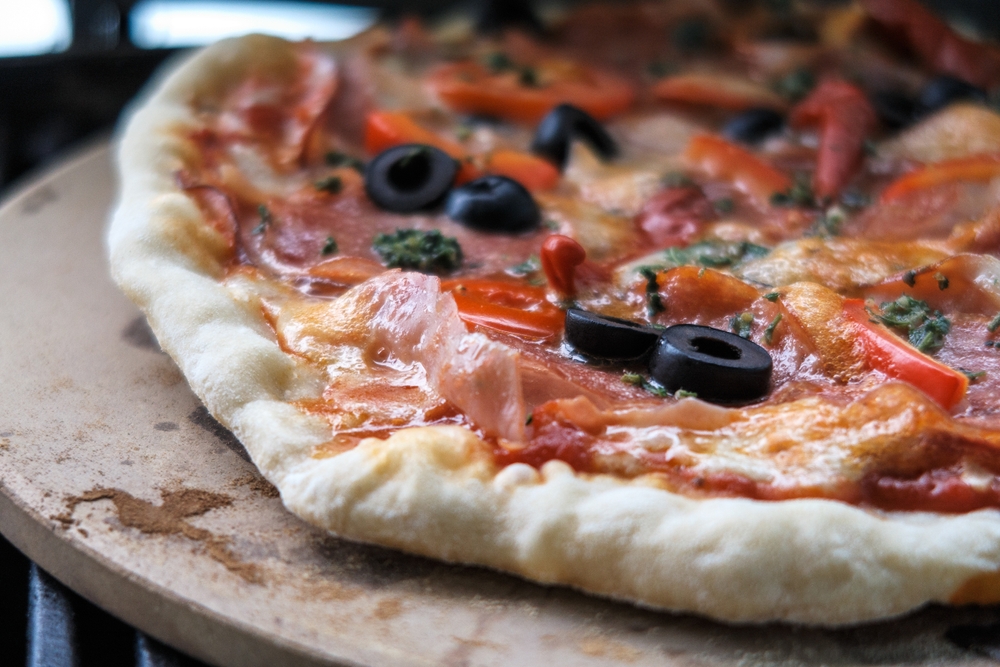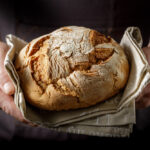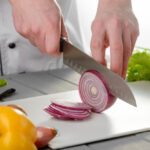Pizza Stone in the Oven – How and What It’s Used For
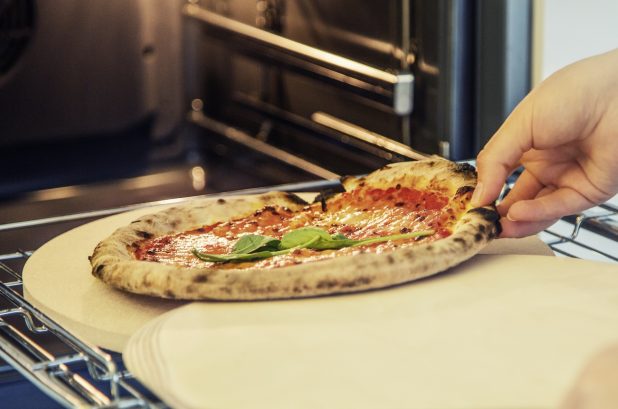
The pizza stone in the oven is a versatile tool that can be used not only for preparing delicious pizza, but also for a variety of other delicious dishes.
In this post, you’ll learn how to make the most of the pizza stone in the oven to make crispy pizzas, aromatic flame cakes, and more. In addition, we will explain the advantages of a pizza stone in the oven, shed light on the differences between fireclay and cordierite pizza stones and introduce you to our high-quality Tyrolit Life pizza stone, which will give you an Italian-style pizza experience.
The advantages of a pizza stone in the oven
What does a pizza stone do? Of course – authentic pizza from the local oven, which can compete with that from the professional oven. Because when baking, the pizza stone brings a number of advantages that make it so popular:
- Crispier crust: The direct heat transfer from the stone to the dough results in a crispier crust akin to that from a pizza oven, characteristic of an authentic pizza.
- Optimal moisture management: The stone can absorb excess moisture from the dough during pizza baking, helping to maintain a crispy bottom and juicy topping.
- Versatile use: In addition to pizza, a pizza stone can also be used for other dishes such as bread, tarte flambée or even cookies.
- Long heat retention: After preheating, the pizza stone retains its high temperatures for a long time in order to bake several pizzas in a row.
- Easy to clean: A well-maintained pizza stone is easy to clean and can be used for many years, making it a cost-effective and sustainable investment.
Baking on the pizza stone – more than just pizza
Baking on the pizza stone opens up a variety of culinary possibilities beyond classic pizza. From tarte flambée to homemade bread and rolls, the pizza stone transforms any dish into a culinary masterpiece with crispy bottom and perfect baking results. Flatbreads also belong on the list of things you can do with a pizza stone.
Thin cookies and pastries also benefit from the stone’s even heat distribution. Specialties like tarte flambée or pretzels can also be prepared on the pizza stone, promising an unparalleled taste experience.
How do I bake with a pizza stone?
Learn how you can easily make baked goods with your pizza stone – from bread to desserts, the pizza stone has many advantages. Read more!
Instructions – 3 steps to the perfect pizza in the oven
From heating to cleaning: In order to be able to use a pizza stone correctly, you don’t have to pay too much attention. Only a few subtleties about handling are important in order to soon be able to bake professional-level pizza.
1. Preheat the pizza stone
Before using it in the oven, it is important to properly preheat the pizza stone to achieve optimal baking results. Place the pizza stone on a lower rack in your still cold oven and set it to the temperature recommended by your pizza stone’s manufacturer. This is often simply the oven’s highest setting; at Tyrolit, we recommend setting it to approximately 230°C with both top and bottom heat.
Preheat the pizza stone as per the manufacturer’s instructions – typically, the preheating time for the pizza stone ranges between 30 and 45 minutes with both bottom and top heat. The relatively brief warming period of 30 minutes for the Tyrolit Life pizza stone is attributed to its waffle structure on the underside, enabling it to absorb heat especially efficiently.
2. Using the pizza peel to transfer onto the stone
After the pizza stone has been preheated in the oven, it is time to place your prepared pizza onto the pizza stone. Utilize a pizza peel, whether wooden or stainless steel, to safely and effortlessly transfer the pizza onto the hot stone.
Slide the peel under the pizza dough to pick it up and place the pizza on the pizza stone. Ensure there is enough flour under the dough to prevent the pizza from sticking to the pizza stone. Do not damage or deform the dough while transferring it to the hot stone. There, the dough bakes evenly and crisply, while the topping is cooked to perfection.
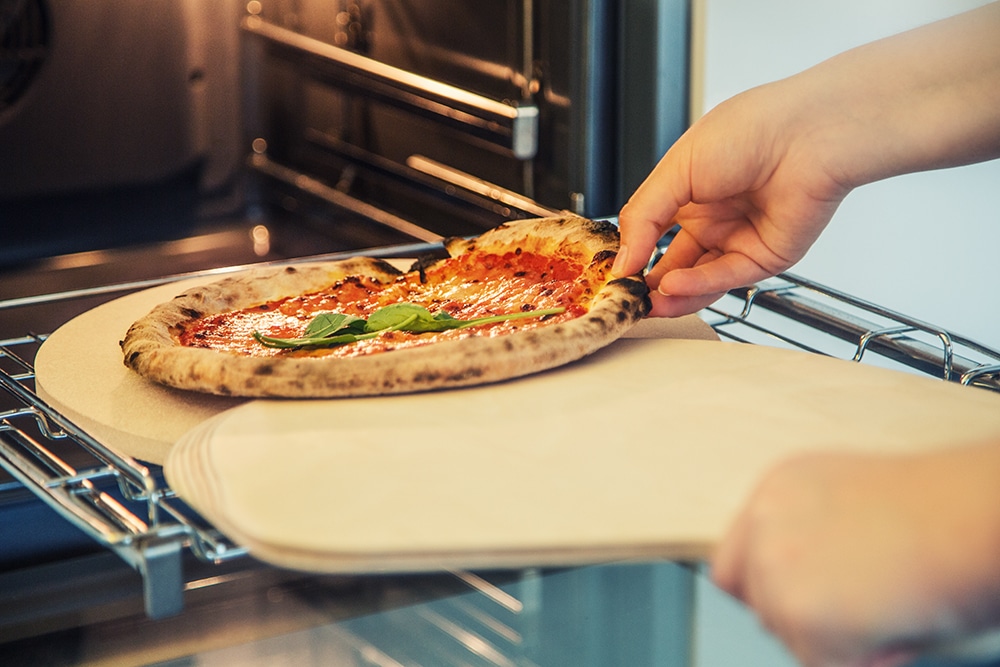
3. Finish baking, then take it out of the oven
As soon as your pizza is on the hot pizza stone in the oven, the baking process begins – you will be amazed at how quickly the pizza base rises!
The exact baking time depends on the thickness of the dough, the temperature of the pizza stone and the topping. However, it usually takes about 8-12 minutes for the pizza to be fully baked, for the dough to be crispy, and for the topping to be perfectly cooked.
Use your pizza peel again to transfer the finished pizza from the baking stone onto a cutting board. Because the pizza peel is so handy during baking, it often comes included with a pizza stone set – like the one from Tyrolit Life.
Allow the pizza stone to cool down and clean it
After you have enjoyed your delicious pizza, it is important to let the pizza stone cool down properly and clean it so that it is ready for the next time. First, turn off your oven and let the pizza stone cool in it. Avoid touching the hot pizza stone immediately, otherwise you could get burned.
Once the pizza stone has cooled down, you can carefully remove it from the oven. For cleaning, it is best to use only a dry, or if necessary, a slightly damp cloth or brush. Avoid using dishwashing detergent or soap, as they can permeate the stone and potentially affect the taste of your future pizzas.
Gently wipe the pizza stone to remove food residues, and if necessary, use a ceramic hob scraper to gently remove dried-on food. Always follow the manufacturer’s instructions during cleaning, and do not be surprised if the stone accumulates more stains over time. This patina is completely normal and does not need to be removed.
Fireclay or Cordierite – Which Pizza Stone for the Oven?
Fireclay or Cordierite? Both materials are frequently used for making pizza stones, each with its own small yet significant differences. Fireclay stones are renowned for their superior heat retention, which leads to uniform heat distribution and a crispy, delicious pizza. Moreover, fireclay is considered one of the most traditional materials for a pizza stone.
Cordierite stones are also popular and appreciated for their heat retention and ability to cope with high temperatures. Due to the less porous surface, cordierite pizza stones are considered a bit more robust and easier to clean.
Another important consideration when buying a pizza stone is its dimensions: should it be thinner and therefore heat up faster, or do you want a thicker stone that can be a bit more unwieldy and heat up longer, but also stores more heat and is ideal as a bread baking stone? Do you prefer the pizza stone in round or square?
We at Tyrolit Life have a clear tendency – more on this in the next chapter.
Cordierite pizza stone – All details about the material
In this article, we delve into the world of pizza baking, with an emphasis on the traditional pizza stone that forms the basis for crispy, delicious pizzas. You will also learn about the benefits of cordierite.
Tyrolit Life Pizza Stone – For Pizza Just Like in Italy
The Tyrolit Life pizza stone offers the opportunity to prepare crispy and authentic pizzas at home, which are in no way inferior to those from the restaurant. Thanks to its high-quality waffle structure, it heats up extremely efficiently, so you can quickly start baking.
The Tyrolit Life pizza stone is not only perfect for oven use but can also be utilized on a grill. Whether it’s a gas grill, charcoal grill, electric grill, or a classic kettle grill – placing the pizza stone on the grill provides unique culinary experiences. The FLEX version of the pizza stone is especially advantageous here, as the three-piece pizza stone can be placed on the grill either as a whole or in segments, saving valuable space on the grill grate.
Benefits of Tyrolit Life Pizza Stone
Waffle structure: The special waffle structure on the bottom of the pizza stone ensures optimal heat distribution and storage, resulting in an evenly baked dough.
FLEX Stone in 3 parts: The pizza stone is also available as a FLEX model, consisting of three parts. This allows for flexible adjustments according to your needs and saves space in the oven or on the grill.
Manufactured by Tyrolit Life: Quality and precision are paramount at Tyrolit Life, experts in ceramic abrasives. The pizza stone is crafted with the utmost care and expertise to enable the preparation of crispy, stone oven-style pizzas.
Oven Pizza Stone FAQs
How do I use the pizza stone in the oven?
What does a pizza stone do for the oven?
What can be done to prevent pizza from sticking to the pizza stone?
Can you put parchment paper on the pizza stone?
Pizza Stone – All Facts on Materials, Application, and Maintenance
The pizza stone has become a must-have in countless kitchens. In this post, we'll take a look at interesting facts about this kitchen helper – one thing in advance: the pizza stone is far more versatile than you might think.

